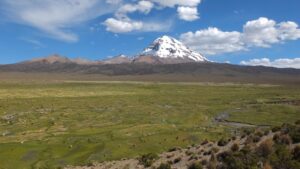FS 3.100: Climate change impact on mountaineering, infrastructure & solutions for adaption
Details
Full Title
The impact of climate change on mountaineering and how it affects hiking trails, mountain huts and rock climbing areas and solutions for adaptions
Scheduled
—
Convener
Co-Conveners
Assigned to Synthesis Workshop
—
Categories
Adaptation, Hazards, Sustainable Development
Keywords
Climate change, Mountaineering, Mountain Infrastracture, Climate change adaption
Description
Climate change has profound effects on mountaineering, significantly altering hiking trails, mountain huts, and rock climbing areas. Rising temperatures are causing glaciers to retreat and permafrost to thaw, destabilizing mountain environments. As a result, traditional hiking routes are becoming more hazardous due to rockfalls, landslides, and unstable terrain. Some trails have even become impassable, forcing the creation of new paths or the modification of existing ones. Mountain huts, which serve as crucial refuges for climbers and hikers, are also affected. The changing climate impacts water supplies, increases maintenance costs, and may require relocation due to shifting landscapes or increased risk of avalanches. Rock climbing areas are similarly influenced by the degradation of rock stability, making previously safe routes more dangerous. Additionally, shorter seasons due to higher temperatures limit the time available for safe outdoor activities. These impacts necessitate adaptive strategies and measurements to adapt to the changing conditions. Overall, climate change not only threatens the safety and accessibility of mountaineering but also demands comprehensive responses from the outdoor community, mountaineering associations, local authorities, and environmental organizations to mitigate risks for mountaineering and key infrastructure as mountain huts, hiking trails and rock climbing areas.


